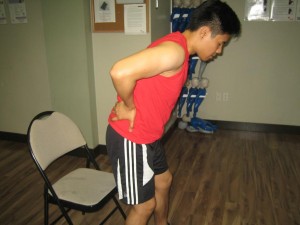A tailbone injury is defined as damage to the tailbone, typically from a slip on smooth or slippery surfaces and falling on one’s lower back. It is important to note that the tailbone or coccyx is the lowest region of the spine.
What are the usual causes?
A tailbone injury can be brought about by various factors including:
- Fall injuries particularly involving the base of the spine or lower back. Once a fall occurs, the individual drops forcefully on hard surfaces in a seated position which increases the risk for fracturing the tailbone.
- Occupational hazards especially when working with mechanical equipment
- Working in great heights such as in construction sites
- Sports-related and vehicular accidents
- Structural collapse of houses or buildings from manmade or natural disasters
In some instances, the tailbone is damaged during childbirth.
What are the signs?

The usual indications that might arise if an individual is suspected with a tailbone injury might include:
- Moderate to significant pain or achiness in the coccyx region that is intensified when sitting or during bowel movement.
- Hairline fracture
- Swelling and bruising at the site of damage
- There is pain if pressure is applied on the site of the tailbone particularly when sitting or leaning against a wall
- Weakening of the legs or inability to stand normally or comfortably
These symptoms might be more severe in nature among the elderly especially women, particularly those who are affected by osteoporosis.
If a fracture is suspected, the following signs might be present:
- Inflamed tailbone region
- Nausea
- Intense pain while attempt to stand or sit
- Redness or bruising on the site
- Discomfort during bowel movement or sexual activity
- Associated injury to the lower back or spine
Management for a tailbone injury
In most cases of tailbone injury, these measures must be considered:
- Any visible wounds must be cleansed with water.
- Apply an ice pack on the site of injury to lessen the pain and swelling.
- An over-the-counter pain medication can be given to reduce the pain for adults.
- The individual should only sit on soft surfaces such as cushions or a donut-shaped air tubes.
- The diet should be rich in fiber and take stool softeners to prevent hard stools.
If necessary, the individual should be taken to a doctor for further assessment. In case damage is suspected to the spine or pelvic bone, call for emergency assistance.
More Information / Disclaimer
The information posted on this page on a tailbone injury is for learning purposes only. Learn to recognize the indications and how it is managed by taking a standard first aid course with Saskatoon First Aid.
